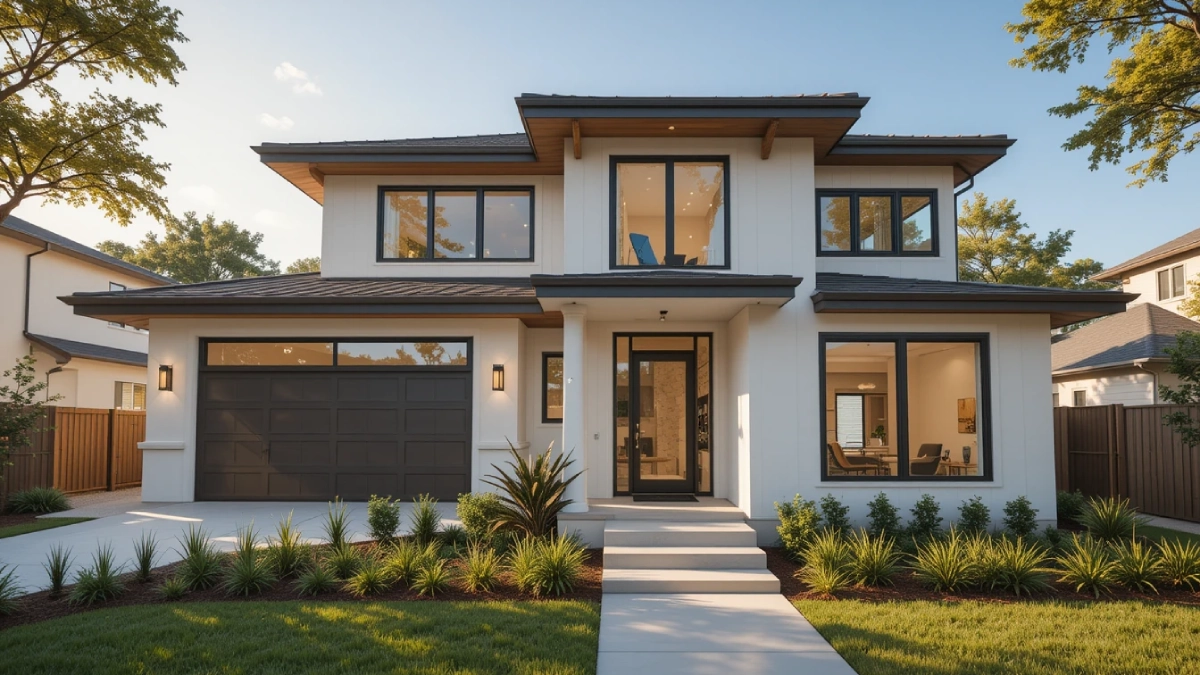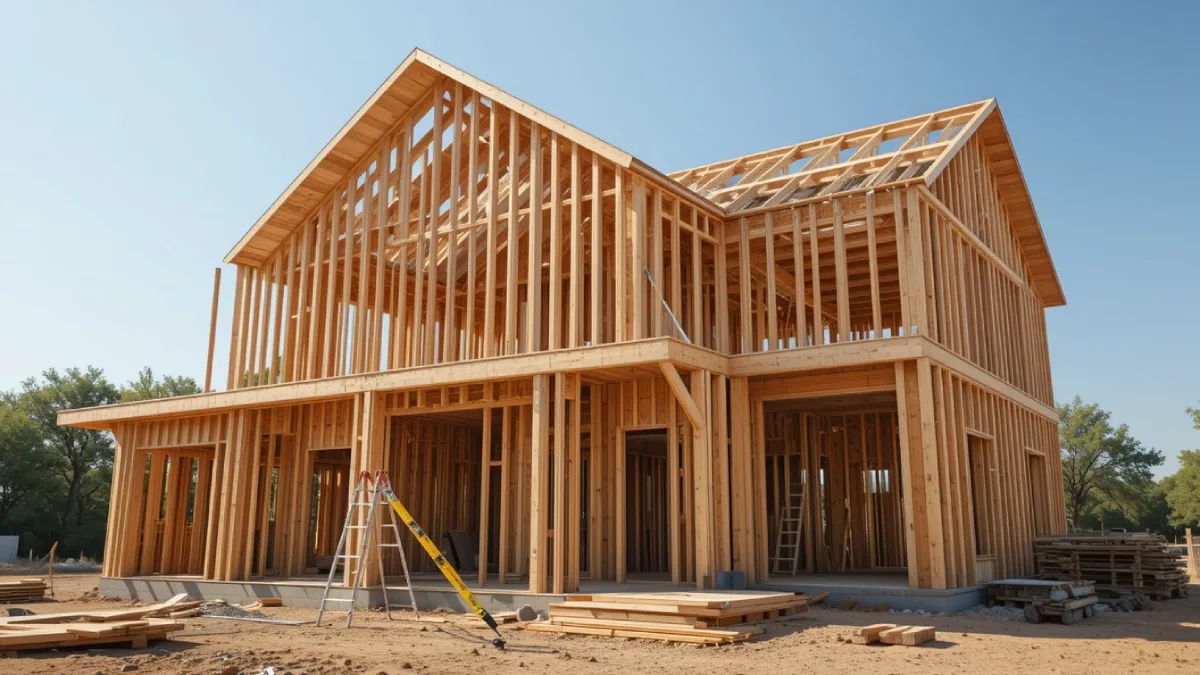Building a home is a big adventure. It’s full of choices, excitement, and questions. Whether you’re planning your first house or building your dream home, this guide is here to help. We’ll walk you through the process of building a house, step by step.
This guide is for anyone considering a custom built house, especially in fast-growing areas like San Antonio or Plano, Texas. Let’s dive into how to build a home from the ground up.
Step 1: Start With a Plan
Everything starts with a plan. First, think about your needs and your budget. Ask yourself what kind of space you need. Think about how many bedrooms, bathrooms, and other features you want.
Next, hire a builder or architect. These experts can help you design the layout. Make sure your plan fits your lifestyle.
Also, check local building codes. Each city may have different rules.
Make sure you:
- Set your budget early
- Create a list of must-haves
- Hire a licensed professional
- Ask for sample floor plans
Planning well saves time and money in the long run.
Step 2: Buy the Land
Before you build, you need a lot of things. Some people already own land. Others need to buy a new one. Look for land that fits your plan. Make sure utilities like water and power are available.
Ask these questions:
- Is the land ready for a home?
- Is it in a flood zone?
- How far is it from schools, work, or stores?
Also, check with the city. Make sure you’re allowed to build a house on the land. This part is easy to skip, but very important.
Step 3: Get Permits and Approvals
Now it’s time to make it official. Your builder or contractor will help you pull the right permits. This means the city permits you to build.
You’ll usually need:
- A building permit
- Electrical and plumbing permits
- Environmental approvals
This process may take weeks. But it’s a must. If you skip this step, it can cause big delays and even legal trouble.
In places like Plano, the city has clear rules. Ask your builder to help handle this part.
Step 4: Start the Foundation
Now, the real work begins. Your construction team starts building. First comes the foundation. Most homes use either a slab, a crawl space, or a basement.
Here’s what happens:
- The crew clears the land
- They dig holes for footings
- They pour concrete for the base
- They check for level and dryness
The foundation must be strong. Everything else sits on top. It’s one of the most important steps in house construction.
Step 5: Framing the House
Next, your home starts to take shape. This is the framing step. It’s when you can start to see walls, floors, and the roof come together.
Framing includes:
- Putting up wood or steel studs
- Installing roof trusses
- Sheathing the walls
It’s fast and exciting. You’ll finally see how big your rooms are. But don’t rush. The builder needs to make sure everything is level and secure.
Step 6: Rough Plumbing, Electrical, and HVAC
Once the frame is ready, it’s time to install key systems. This part includes plumbing pipes, electrical wiring, and the heating and cooling system (HVAC).
This step is called “rough-in.” It means everything goes inside the walls before the drywall goes up.
Make sure your team:
- Follows the building code
- Installs outlets and light fixtures
- Adds water lines for bathrooms and kitchens
- Places vents for heating and cooling
A home inspector will check everything before moving on.
Step 7: Insulation and Drywall
After inspections, the crew adds insulation. This helps keep your house warm in winter and cool in summer.
Types of insulation:
- Fiberglass rolls
- Spray foam
- Blown-in cellulose
Then comes drywall. The walls and ceilings get covered. Now it feels like a home. This step takes time. The drywall must be cut, hung, and smoothed.
Step 8: Interior and Exterior Finishes
Now it’s time to add style. The team installs trim, cabinets, paint, and more. You’ll also see siding, brick, or stone added outside.
Here’s what gets done:
- Paint goes on the walls
- Cabinets and countertops are installed
- Floors are laid down
- Siding or brick is added to the outside
This is the fun part. You’ll see your style come to life.
Step 9: Fixtures, Appliances, and Final Touches
Next, the final items go in. These include faucets, sinks, toilets, and lights. Your appliances, such as your fridge, oven, and washer, are also now installed.
Make sure to test everything:
- Turn on all lights
- Run each faucet
- Flush every toilet
- Check the doors and locks
The goal is to make sure everything works before moving in.
Step 10: Final Inspection and Walkthrough
Before you move in, you’ll do a final walkthrough. A construction inspector may help. This is your chance to catch mistakes.
Use a final inspection checklist to stay organized. Look for anything that seems off. Make a list and talk with your builder.
Your builder will also do a final clean-up. They want everything to look sharp. Once all boxes are checked, it’s time to move in!
How to Make It a Smooth Build
Want your project to go well? Try these helpful tips:
- Communicate clearly with your builder
- Visit the site often
- Take photos of progress
- Keep copies of all documents
- Ask questions when unsure
Also, be flexible. Some delays are normal. The weather, supply shortages, or labor gaps happen. Just stay in touch and stay positive.
Building in San Antonio or Plano, TX
Texas is booming. Places like San Antonio and Plano are growing fast. That means more homes are going up every day.
In these cities, you’ll find modern styles and great builders. Also, make sure your builder is aware of the local rules. Each city may have its codes and steps.
Ask around. Look at builder reviews. And don’t be afraid to shop around. The right builder makes the whole experience easier.
Ready to Build Your Dream Home?
Now you know the process of building a house. From buying land to moving in, each step matters. And while the journey may have a few bumps, planning makes a big difference.
Want help from a trusted home builder? Looking for support through each step?
Get a quote today for your custom built house. Let’s build the home you’ve always wanted—step by step!
FAQs
It depends on the size and location. Most homes take 6 to 12 months. Delays from weather or permits can make it longer.
Yes, for most custom built houses, you need a construction loan. This helps pay during each step. Later, it turns into a regular mortgage.
It’s best to hire your builder before designing your house. They can guide the process and help with costs and planning.
Yes, but be careful. Changes can delay the process and increase costs. Always talk to your builder first.
It depends on where you live. In some cities, like Charlotte, buying is cheaper. In other cities, like Austin, a building may be less expensive.

